- You are here:
- Home
- About Symbols
- Aiding Literacy Development with Symbol Communication in Early Years
Aiding Literacy Development with Symbol Communication in Early Years

Introduction
The development of language and literacy skills in the Early Years involves encouraging children to communicate. Language and literacy cover speaking and listening and reading and writing. Children can express themselves and communicate through a variety of ways including verbal communication and non-verbal communication. The use of symbols in supporting communication skills can be vital for some children and plays an important role in the development of emergent reading skills for all.
Why symbol communication works
Symbols are images that represent words or concepts and help children visualise the meanings of words. Sometimes it is hard to remember the meanings of new and difficult vocabulary. When words are supported with symbols, the child can be sure they are using the right word and making the correct connection when observing print.
Literacy in the early years includes talking about books, print in the environment, early
mark making and writing, as well as sharing books and reading.
Environmental print
The Practice Guidance for the Early Years Foundation Stage states the important part the learning environment plays in supporting and extending children’s development and learning. A literacy rich environment includes, amongst others:
- Environmental print: letters and words
- Opportunities for children to read independently
Environmental print is the name given to the print that appears in signs, labels, and logos. For many emergent readers, environmental print helps bridge the connection between letters and first efforts to read. Children begin to associate print with meaning and understand that the signs and words around us are meant to convey a message.
Over time, the children will recognise these familiar words/phrases and be able to use them in their reading and writing.
Anytime that you can add a picture to a word card or phrase the better. Children quickly
associate images with words, such as the word STOP on the sign or McDonald's next to the
golden arches, so adding symbols to the setting’s environmental print aids the speed and
understanding of these signs and labels and provides the child with the independence to
navigate the setting and transitions throughout the day.
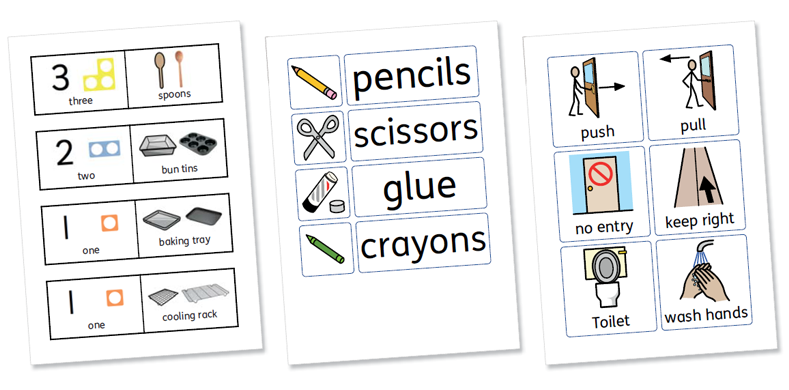
Reading books with visual support
A beginner reader is one who is interested in books but can’t yet read them independently or may be able to read some words but requires continued support to make meaning from print. It could also be a child who is not yet interested in reading books.
Even if a child doesn’t yet know how to read, they can still tell a story from a book. Using books with vivid illustrations and no words, such as Goodnight Gorilla, The Snowman, The Lion and the Mouse, can help children become “storytellers”. In a similar way a symbol only book can also be created (around a child’s chosen topics of interest or favourite pet / cuddly toy for example) and can be ‘read’ independently by the child.
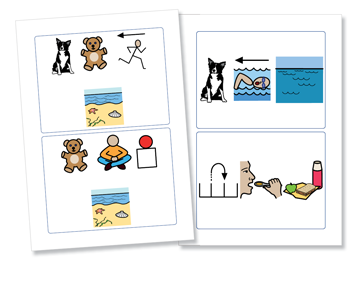
Similarly creating symbolised versions of favourite books can give the child the sense of reading their own book.
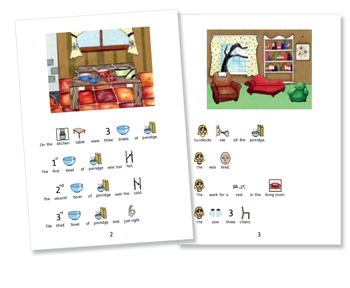
The creation of class books reflecting the activities that the children have undertaken, that includes repetitive sight word phrases, photographs and symbols to support decoding, gives beginner readers another opportunity to practice their reading skills.
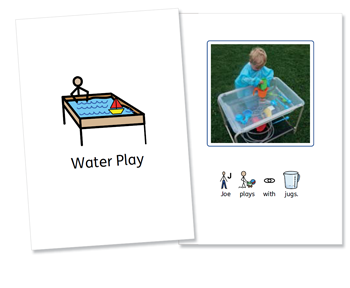
How symbol communication can help readers
gain the skills to become good readers
Good readers have amassed an amazing number of skills by the time they are able to read successfully and independently. These skills can all be supported at the early stages of development by the use of symbols alongside text.
1. Track from left to right and top to bottom
The English convention for reading needs to be well established with familiarity gained through looking at books with adults, but can be enhanced with the use of symbolised print around the nursery setting as seen on labels, signage, visual timetables etc.
2. Know how to sequence events
Good readers understand that phrases / sentences / stories follow a sequence. Establishing predictable routines that are symbol supported, help to encourage children to learn to anticipate events.
Routines help a child to develop sequencing skills (first/then; start/finish), and some tasks can be arranged in left to right order, such as setting the table, laying out clothes, or arranging materials for any activity, reinforcing the tracking skills required for reading.
3. Use picture clues to help decode text
Symbols provide direct support to do this.
4. Have a good vocabulary
The size of a child’s vocabulary is important since the more words a child knows, the easier it will be for him to understand what he is reading. When learning new words, children need to hear, see and use the word multiple times in different contexts before they understand the meaning and can use it themselves.
Adding symbols to topic words used in play / activity areas can help reinforce the meanings of new vocabulary and expand the child’s lexicon.
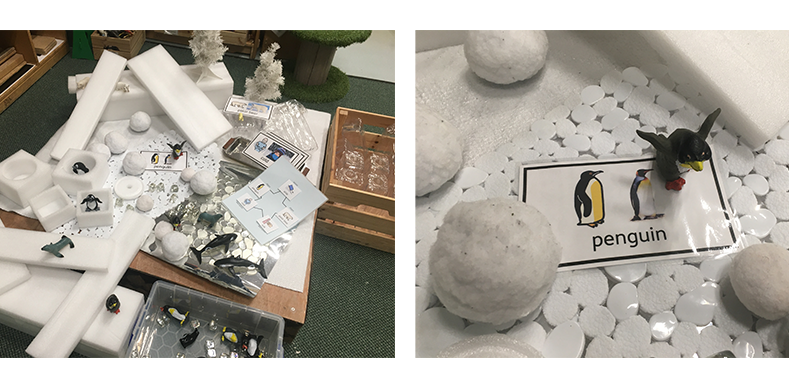
Word walls or word stars can be used appropriately around the setting to enhance vocabulary and ensure that staff are using consistent terminology too.
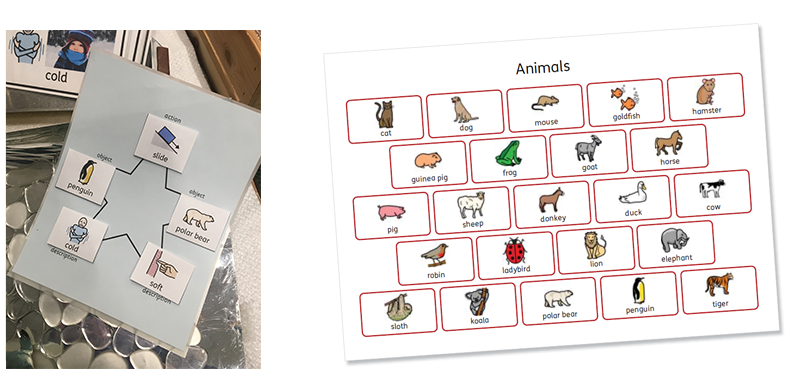
5. Read fluently
The addition of symbols to text helps support the decoding of the word, which in turn increases the speed at which children read. Fluency is a key part in the comprehension and understanding of text.
6. Understand what they have read
Visual cues help children to better retrieve and remember information, understand the subtleties of language and ensure they have the correct meaning for a word.
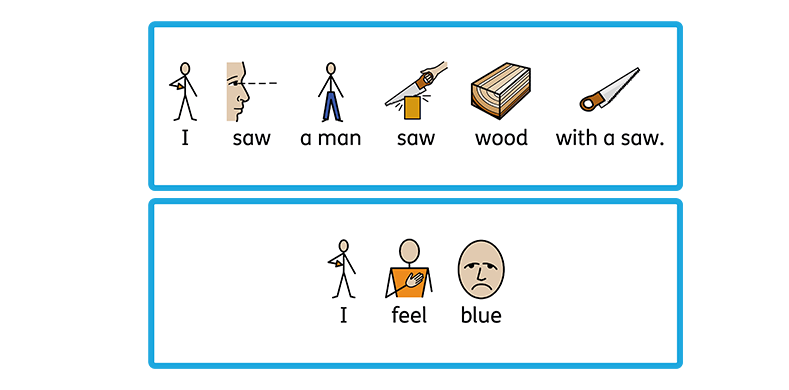
In addition, reading speed and fluency have a great impact on the comprehension of text. A child who spends so much time attempting to decode a word will have entirely lost the meaning and flow of the sentence by the time they have worked out what it says.
7. Understand what they have read
Good readers enjoy reading and read more, therefore gaining the practice required to embed skills.
The addition of symbols to texts provides young children with success at reading, thus increasing motivation and self esteem and the willingness to do it again and again.
What impact has symbol communication had on beginner readers?
The development of literacy skills in the early years is an ongoing and continual process with opportunities and challenges across all areas of the curriculum.
Symbol labelling, visual timetables and symbolised educational materials make it easier for young children to access information independently and feel more confident in the setting.
The addition of symbols to selected text across all areas of the setting and curriculum can help with word recognition and vocabulary development, aid reading speed, fluency and comprehension, support communication, motivation and self-esteem and create independent and confident readers.
‘The children absolutely love returning to these (symbolised) class books and
often choose to look at them because they have invested in the process.’
Rachel James, Early Years Practitioner at Hirst Wood Nursery in Saltaire.
